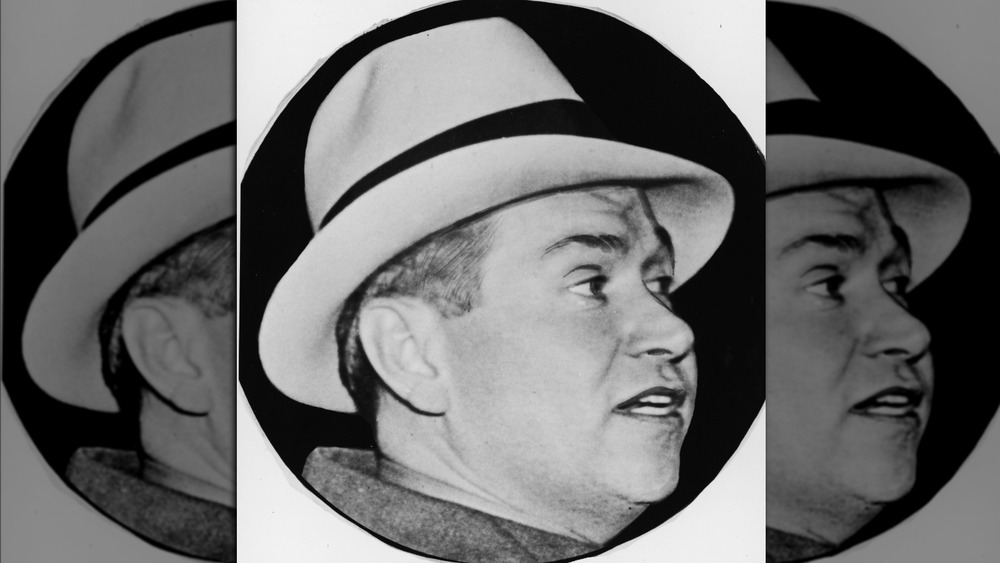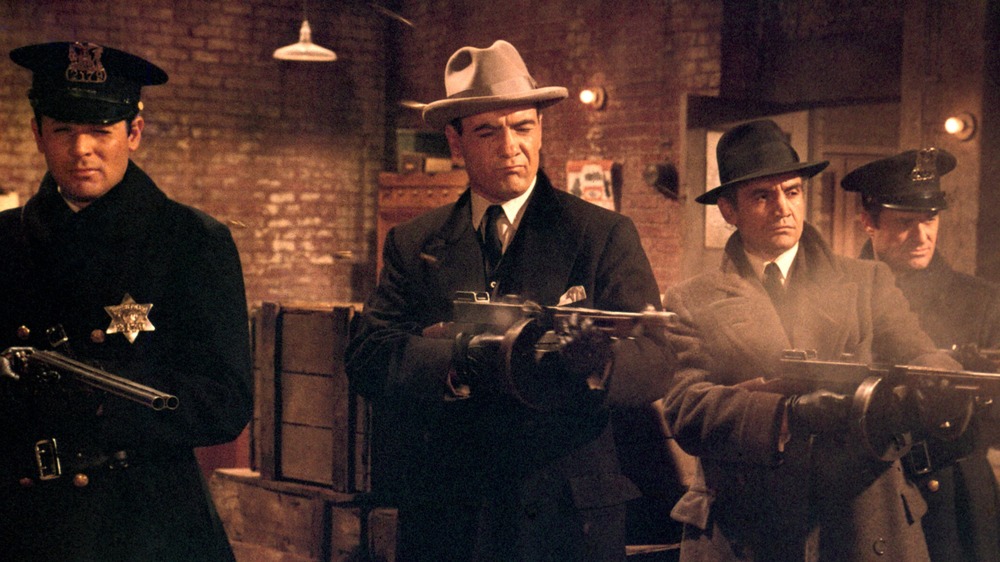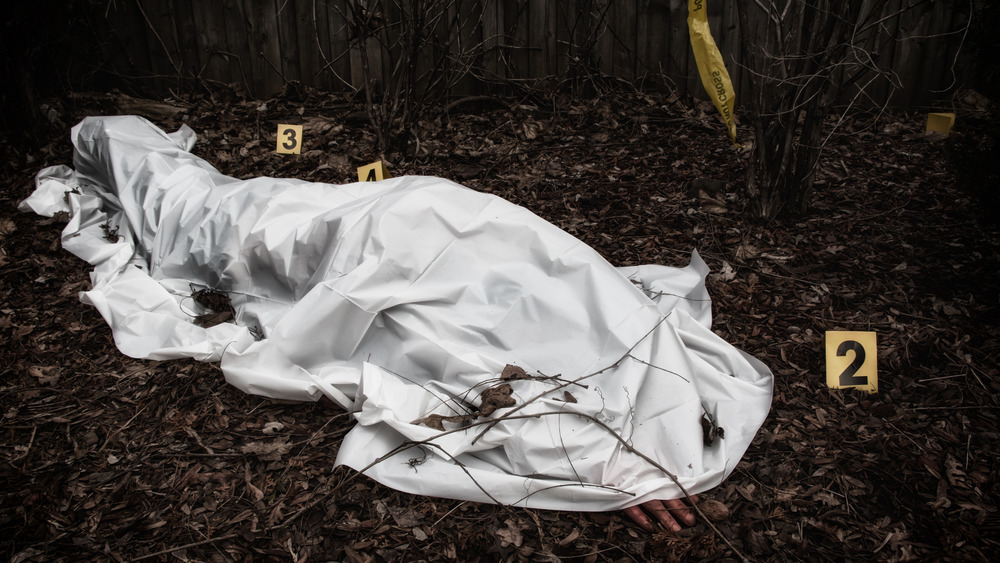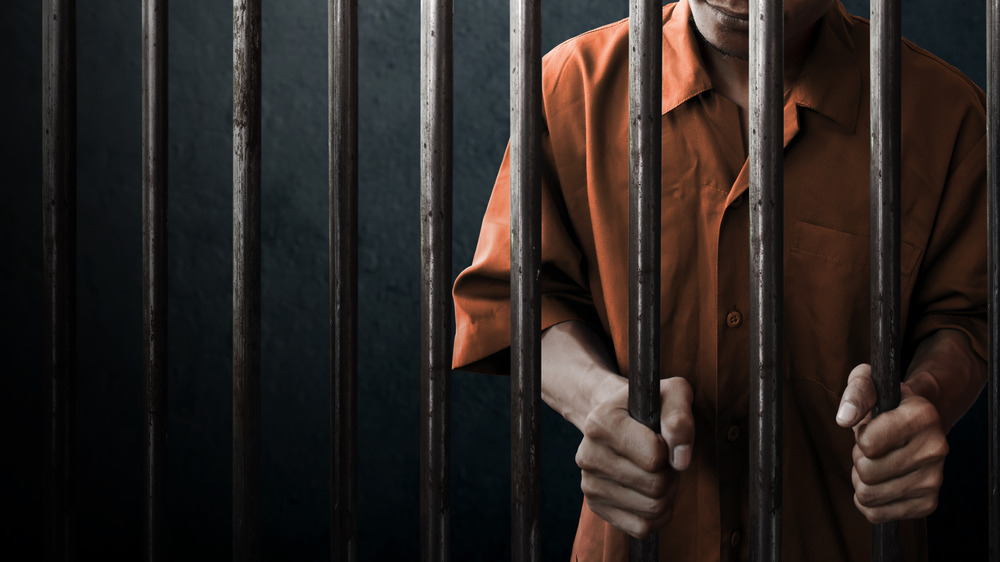The Truth About Al Capone's Rival, Bugs Moran
Everyone knows the name of notorious mobster and Prohibition Era crime boss Al Capone (also known as "Scarface," a nickname he reportedly hated). He's been the subject of books, TV shows, and movies for decades. All sorts of things are known about him, and there's plenty of speculation as well. Capone probably committed a string of crimes, violent and otherwise, for which he was never arrested. Instead, the crime boss was eventually convicted on tax evasion charges. His story is an exciting one. He's certainly the most famous mobster in United States history, but that doesn't mean he's the only one worthy of notoriety.
The Roaring Twenties roared in part because of the proliferation of organized crime, and Capone had his rivals back in the day, in more ways than one. We're talking about the crime boss George "Bugs" Moran, born Adelard Cunin, whose life intertwined with Capone's in dangerous ways. Moran inherited his Chicago-based gang in the early '20s after the death of his boss, mobster Dion O'Bannion, in 1924, according to Britannica explains that was Capone's men who ended Moran's friend and mentor. From then on, it would be Capone and Moran who stepped on each others' toes, which is a nice way of saying they went to war.
The Saint Valentine's Day Massacre
No businessman likes to see competition swoop in and steal their business, and local is a huge factor when it comes to gang business. So-and-so runs drugs here, what's-his-name provides protection there, and so forth. When money and power were on the line, neither Bugs Moran nor Al Capone was the type to back down.
The particular business in question (though there were several) was bootlegged liquor. It was Prohibition, and the booze trade acted a lot like the illicit drug trade today. Whoever controlled the liquor, controlled the crime world. Both Capone and Moran involved in Chicago's illicit liquor trade. Capone wasn't exactly known for letting other mobsters get between him and his customers, so he schemed to put a stop to Moran's competition once and for all.
After catching wind of an operation run by Moran's North Side Gang in a garage at 2122 North Clark Street, Capone sent in his men dressed as police officers, according to Britannica. The disguises made it seem like any other police raid — a common occurrence in those days — so Moran's gang didn't put up much of a fight when Capone's guys lined them up against the wall. Chances are, they thought they were going to be arrested and spend a few hours in jail. Instead, Capone's gangsters slaughtered Moran's seven men. The event took place on Valentine's Day, 1929 — the St. Valentine's Day Massacre.
A little revenge
Surely, Al Capone was intending to do away with his rival during the St. Valentine's Day Massacre, but paranoia would turn out to be a life-saving virtue for Bugs Moran. As Moran rolled up to the garage that day, he noticed a police car full of men pull up to the building, as Britannica explains, so he skedaddled. Little did Moran know, the men in the car were the same men who would slaughter his employees shortly after.
According to History, Moran was completely thrown off guard when he heard the news. He was shaken. When he was interviewed by reporters, he stated, "Only Capone kills like that!" To which Capone sarcastically replied in an interview of his own, "The only man who kills like that is Bugs Moran." Capone was conveniently vacationing in Florida at the time. The mobster was a master of alibis. No one was ever convicted of the murders.
Moran would get a sliver of revenge in the time following the massacre of his men. Jack McGurn, one of Capone's men from the winning side of the massacre, was shot in the chest — a hit ordered by Moran. McGurn survived after some pretty intense surgery, only to be murdered in 1936, long after his retirement, by three men armed with machine guns. The murder is also believed to have been a hit orchestrated by Moran, according to National Crime Syndicate.
A mob boss reduced to petty crimes
The St. Valentine's Day Massacre crippled Bugs Moran's mob, and it never recovered. The majority of his men were in that rented garage while the bullets were flying, and they didn't make it out. The hold Moran had on Chicago and the liquor trafficking industry died along with his men, but Moran wasn't going to change careers altogether. He was simply knocked from mob boss to petty crime.
The gangster was now pursuing a life of robbery. Chances are good he still did some minor bootlegging, since one of his accomplices, Al Fouts, was a notorious bootlegger in Dayton (Ohio or Kentucky; they're connected), according to Dayton Daily News. It was in Dayton that Moran would finally be sentenced to prison time.
Moran and his crew — Al Fouts, Virgil Summers, and himself — decided to kidnap a barkeeper in Moraine, Ohio, in 1946. The barkeeper had just withdrawn $10,000 in cash to pay his employees, so he was prime picking. The robbers were masked when they tied the man up in the woods and took off with his cash. The trial would lead to a 10-year prison sentence for Moran that would immediately be followed by his arrest for a previous robbery after he was released in 1956, according to History. Bugs Moran would die of lung cancer in prison in 1957 at the age of 63. On the bright side, he outlived Capone by a decade.



